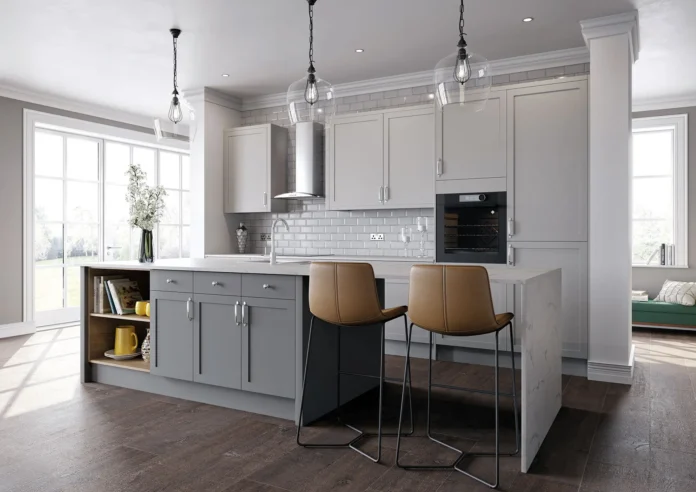Planning a kitchen renovation can be an exciting yet daunting task. One of the most crucial aspects is understanding the kitchen supply and installation process. From sourcing materials to executing the installation, this guide covers everything you need to know to create your ideal kitchen space.
What is Kitchen Supply and Installation?
Kitchen supply and installation encompass the entire process of designing, sourcing, and installing kitchen elements. This includes cabinets, countertops, appliances, fixtures, and flooring. Engaging professionals can streamline this process, ensuring high quality and efficiency.
Key Components of Kitchen Supply and Installation
- Design Consultation
- Material Sourcing
- Installation Services
- Final Touches
- Post-Installation Support
Why Invest in Professional Kitchen Supply and Installation?
1. Expertise and Experience
Hiring professionals for kitchen supply and installation ensures you benefit from their expertise. They can provide insights that save you time and prevent costly mistakes.
Advantages of Professional Expertise
- Design Knowledge: Professionals can suggest designs that maximize space and functionality.
- Technical Skills: Skilled installers understand plumbing, electrical work, and building codes.
2. Time Efficiency
Professional services can significantly reduce the time needed to complete a kitchen renovation. Their experience allows them to execute tasks quickly and effectively.
Streamlined Process
- Coordinated Scheduling: Professionals manage timelines for delivery and installation, keeping the project on track.
- Focus on Details: Experienced teams can anticipate challenges and address them proactively.
3. Quality Assurance
When you choose professional services, you can expect high-quality materials and workmanship. This leads to a more durable kitchen that meets your aesthetic and functional needs.
Benefits of Quality Assurance
- Superior Materials: Professionals often have access to premium materials that enhance longevity.
- Warranties: Many services offer warranties on their work, providing peace of mind.
The Kitchen Supply and Installation Process
Step 1: Initial Consultation
The first step in the process is an initial consultation. This meeting allows you to discuss your vision, budget, and needs with a design professional.
Discussion Points
- Design Preferences: Share your ideas and preferences for styles, colors, and layouts.
- Budget Guidelines: Establish a clear budget to guide the selection of materials and designs.
Step 2: Design and Planning
After the initial consultation, the design team will create a detailed plan for your kitchen. This often includes sketches or 3D renderings to help you visualize the final product.
Considerations for Design
- Layout: Decide on a layout that maximizes efficiency and convenience.
- Material Selection: Choose cabinets, countertops, and appliances that align with your style and budget.
Step 3: Material Sourcing
Once the design is finalized, the next step is sourcing the materials. This is where a professional service can really shine, ensuring high-quality materials are procured.
Sourcing Strategies
- Brand Selection: Opt for reputable brands known for their quality and reliability.
- Delivery Logistics: Professionals coordinate the delivery of materials, ensuring they arrive on time for installation.
Step 4: Installation
With materials in hand, the installation phase begins. Skilled installers will execute the plan, ensuring that everything fits perfectly and is installed correctly.
Key Installation Steps
- Demolition: If applicable, old kitchen elements are removed carefully to prepare for the new installation.
- Cabinet Installation: Cabinets are installed first, providing the structure for the rest of the kitchen.
- Countertop and Appliance Installation: After the cabinets, countertops and appliances are fitted in place.
Step 5: Final Touches
After the primary installations are complete, attention shifts to the final touches. This includes installing hardware, backsplashes, and any remaining fixtures.
Important Final Steps
- Hardware Installation: Add knobs, pulls, and hinges to cabinets and drawers.
- Backsplash and Fixtures: Install backsplash tiles and connect plumbing for sinks and appliances.
Step 6: Post-Installation Support
Once your kitchen is complete, many professional services offer post-installation support. This includes assistance with any issues that may arise and information on warranties.
Tips for a Successful Kitchen Supply and Installation
1. Define Your Budget Early
Establishing a budget from the beginning will guide your decisions throughout the project. Be clear about your financial limits and allow for some flexibility.
2. Research Materials Thoroughly
Take time to research different materials and brands to find options that fit your needs and preferences. High-quality materials may cost more upfront but can save you money in maintenance over time.
3. Maintain Open Communication
Effective communication with your design and installation team is essential. Regular updates and discussions help ensure that everyone is on the same page.
4. Prepare for Disruption
Kitchen renovations can disrupt your daily life. Consider setting up a temporary kitchen space or planning meals in advance to minimize inconvenience.
5. Stay Flexible
While having a clear vision is important, be open to changes. Unexpected issues may arise that require adjustments to your initial plan.
FAQs
1. How long does kitchen supply and installation take?
The duration can vary widely based on the complexity of the project, but most kitchen renovations take between 4 to 8 weeks.
2. What is the average cost for kitchen supply and installation?
Costs can range significantly depending on the materials and design choices, typically from £5,000 to £20,000 or more for a complete renovation.
3. Do I need a designer for my kitchen project?
While not necessary, hiring a designer can help streamline the process and ensure your vision is effectively realized.
4. What types of materials should I consider?
Common materials include solid wood or laminate for cabinets, granite or quartz for countertops, and stainless steel for appliances.
5. Can I live in my home during the renovation?
Yes, but be prepared for some disruption. Many homeowners set up a temporary kitchen in another room during renovations.
For further insights into kitchen supply and installation, check out Plane Sailing Installations.
